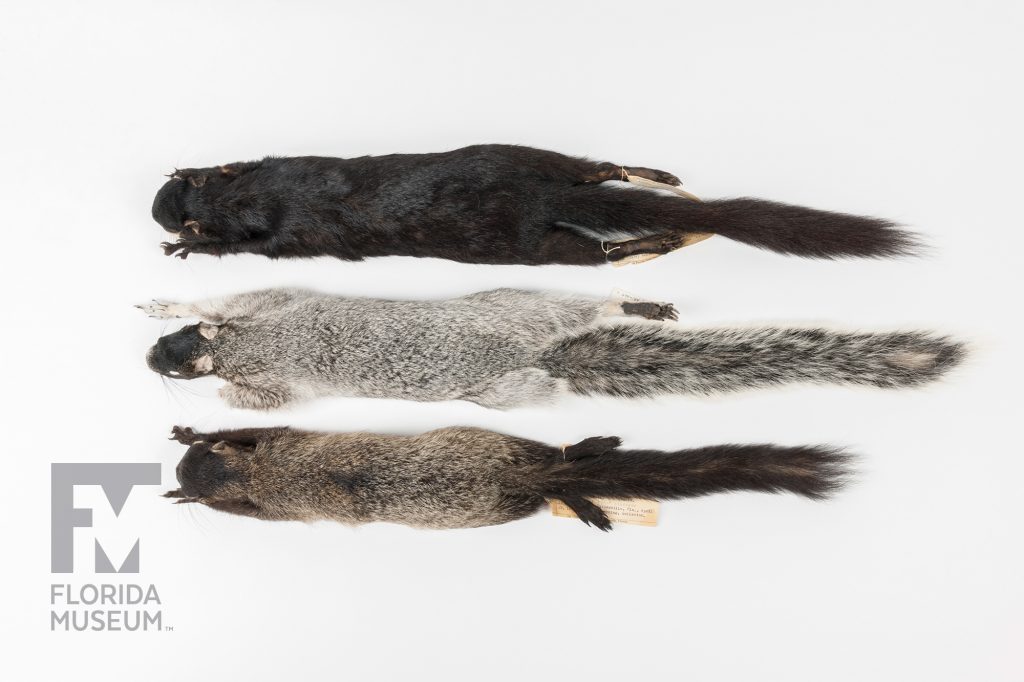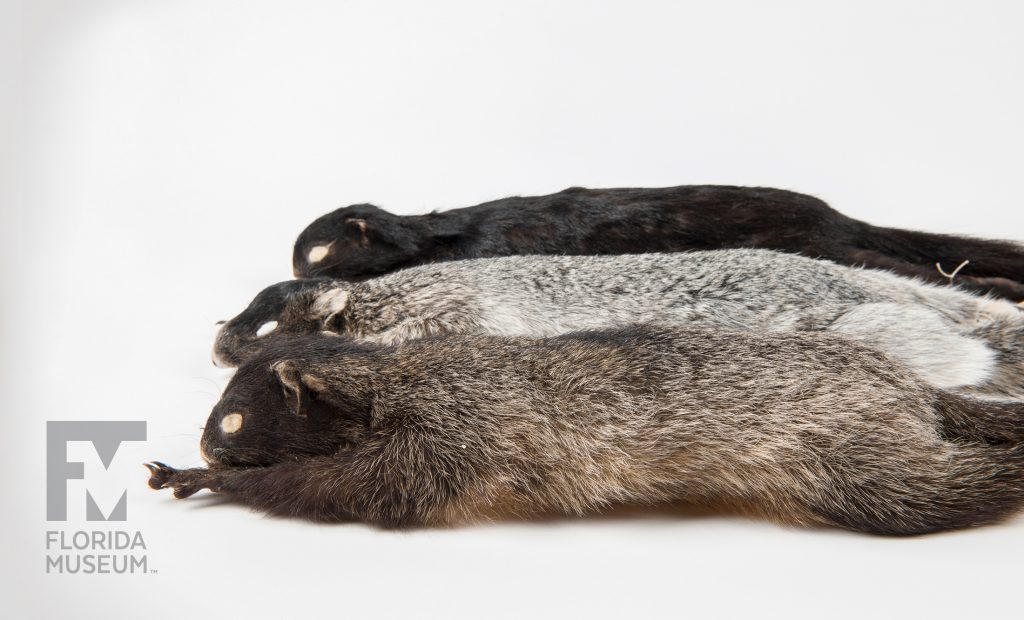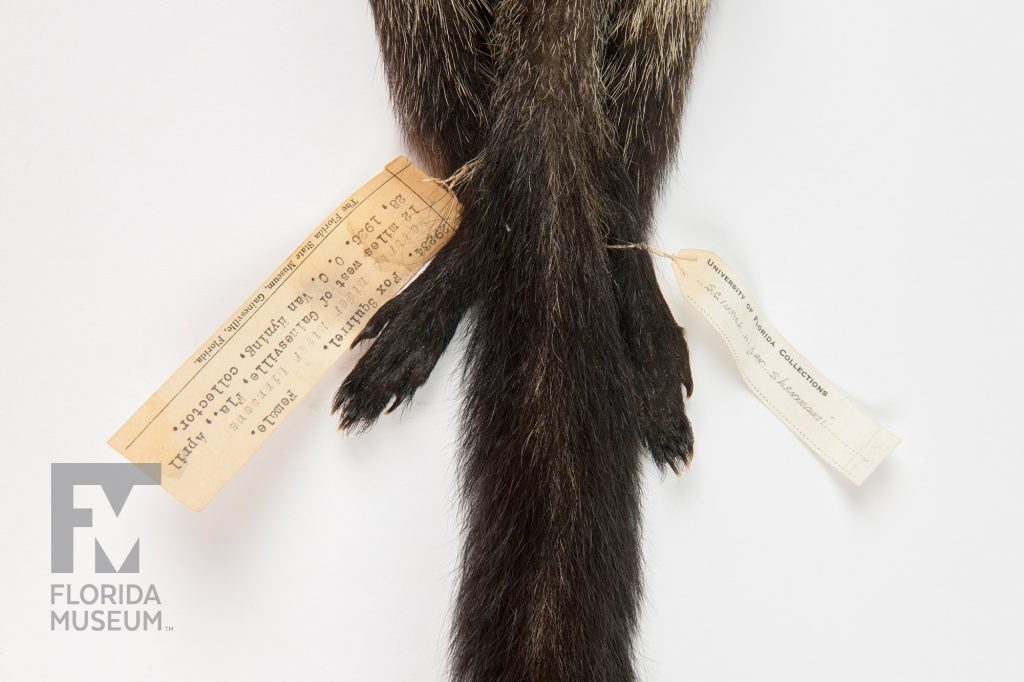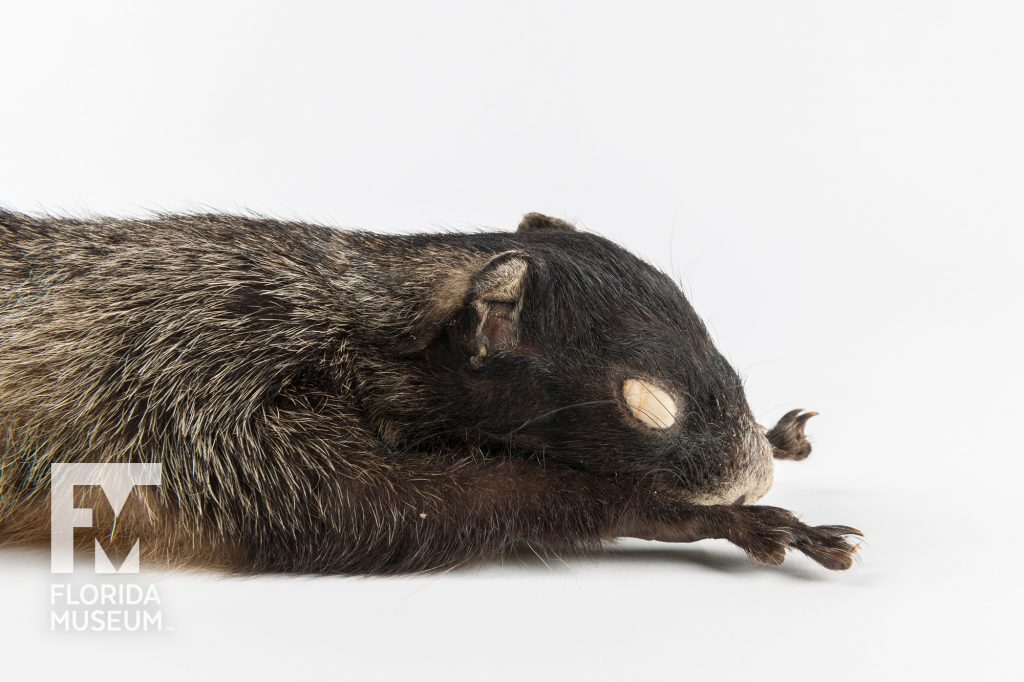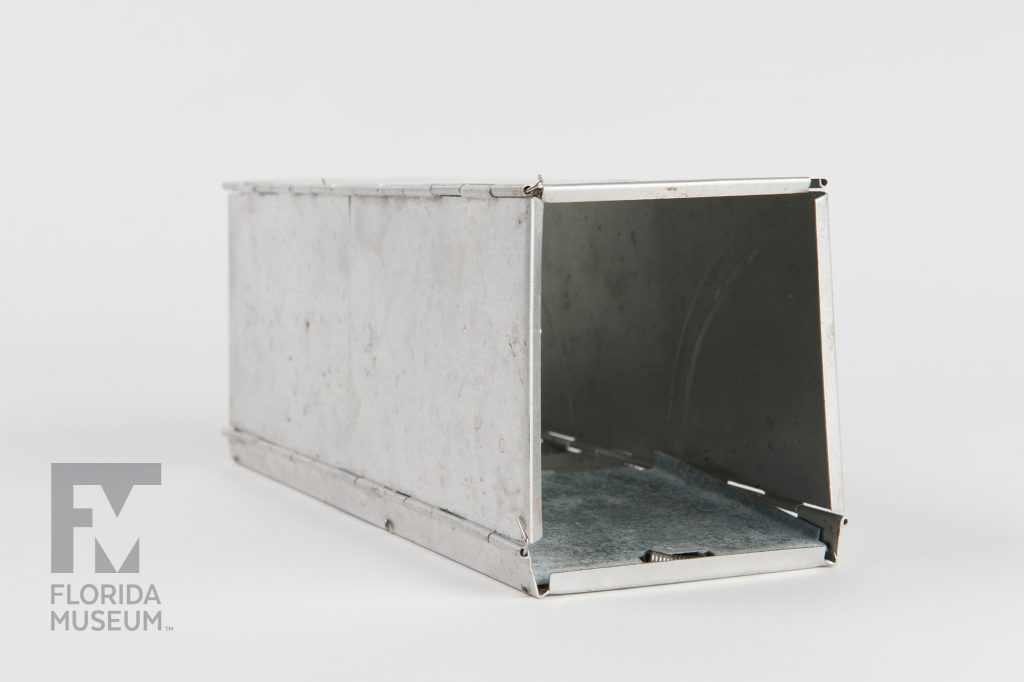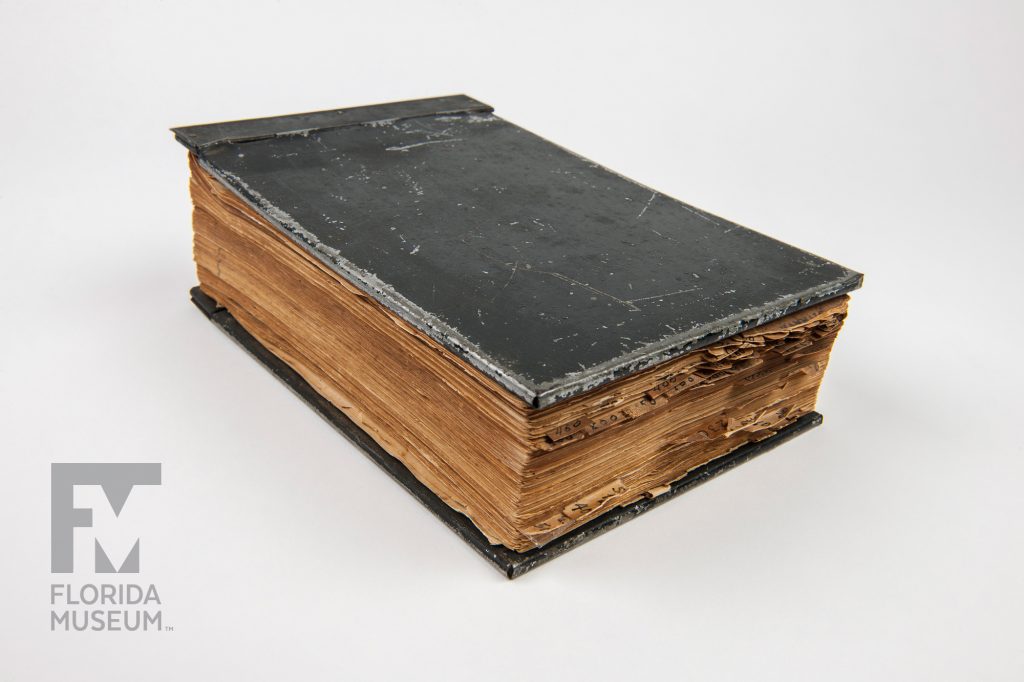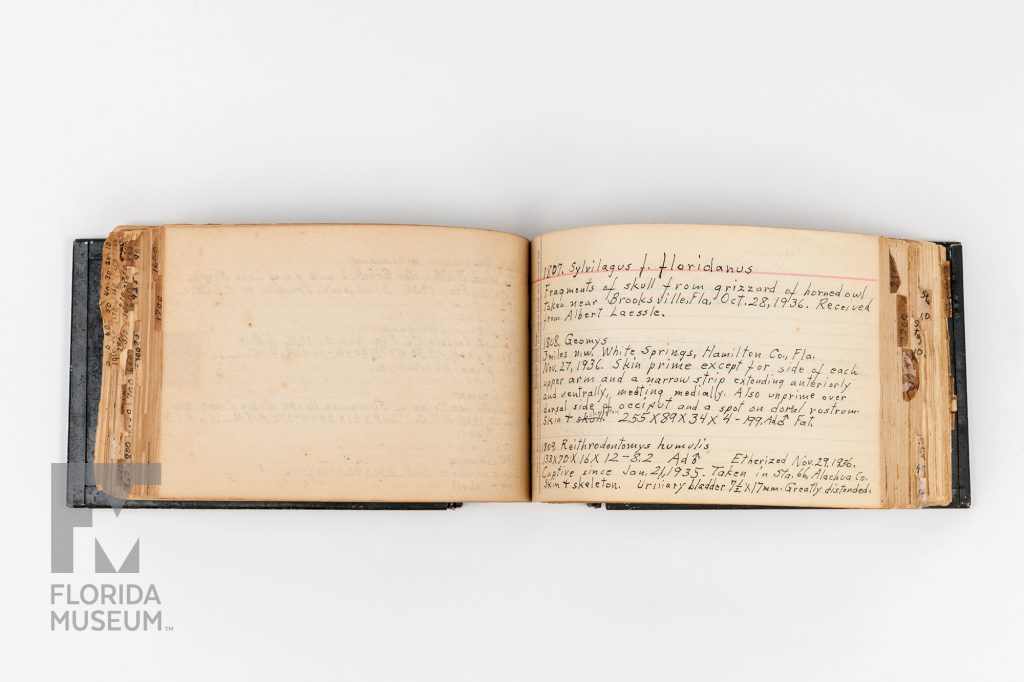In the 1930s, professor H.B. Sherman studied small mammals in North Central Florida, during which time he invented the Sherman Trap. These traps remain a commonly used tools for capture and release studies of small mammals. The rare Sherman’s Fox Squirrel is named in his honor.
Summary
Sherman’s Fox Squirrel (Sciurus niger shermani) and Trap
From Putnam Co., Florida, Nov. 1940
From the H.B. Sherman Collection
Collection
Story
If you’ve ever been in an open forest and seen a squirrel that is larger and of different coloration than the typical Eastern grey squirrel that you normally see, you’ve probably just seen a Fox squirrel. Fox squirrels are found throughout the eastern United States and into some parts of the Great Plains and western United States as well as Canada. They are typically larger than grey squirrels and have very distinct colorations depending on where they’re found. In some areas, they are brownish grey to brownish yellow with an orange underside and in other places they may be almost completely black or black with some white bands on their face or tail.
Sherman’s fox squirrel is a subspecies of squirrel that’s found in Florida and Georgia, especially in areas where there are longleaf pines and sandhills. Like other fox squirrels, they can exhibit a lot of variation in their fur color, ranging from nearly black to silver and with a tan underside. Here in Florida, Sherman’s fox squirrel is considered to be a species of special concern because they’ve lost so much of their habitat due to habitat loss and degradation.
Sherman’s fox squirrel is named after Harley B. Sherman, who was a prolific ecologist and commonly referred to as H.B. Sherman. He was originally an instructor in New York, but then he came down to Gainesville in Florida in the 1920s to be a professor at the University of Florida in the biology department, and he taught here from 1925 to 1955.
While he was here, he established a business making small mammal traps. These traps are still being sold today and are commonly referred to as Sherman traps, with the business based out of Tallahassee, Florida. Almost every mammologist who has ever trapped a small rodent or a squirrel has used this unique folding flat trap.
H.B. Sherman made a huge collection of Florida mammals and they are all deposited in the Florida Museum of Natural History’s mammal collection.
Verity Mathis
Collection Manager, Mammals*
Florida Museum of Natural History
Exhibit
On display Sept. 23, 2017-Jan. 7, 2018, Rare, Beautiful & Fascinating: 100 Years @FloridaMuseum celebrated the Museum’s rich history. Each Museum collection was asked to contribute its most interesting items and share the stories that make them special. Though the physical exhibit is closed, this companion website remains online, providing an opportunity to experience the Florida Museum’s most treasured specimens.
Exhibit Area: 100 Years of History
Theme: Historical Collections
 Want to see more? Explore more than 300 breathtaking color photos of plants, animals, fossils and cultural heritage materials from the Florida Museum of Natural History’s collections in the award-winning book All Things Beautiful available from the University Press of Florida.
Want to see more? Explore more than 300 breathtaking color photos of plants, animals, fossils and cultural heritage materials from the Florida Museum of Natural History’s collections in the award-winning book All Things Beautiful available from the University Press of Florida.
*This title was accurate at the time the exhibit was on display in 2017. Please visit the collection website to verify current staff and student information.
